
The 10 Best Vlogging Cameras with Flip Screen You Can Get in 2025
If you happen to be looking for the best vlogging camera with flip screen, then
If you happen to be looking for the best vlogging camera with flip screen, then you are in the right place. To help you with making a decision, we are going to showcase 10 great cameras, as well as provide you with an in-depth camera buying guide. And after reading this material, you should be able to make a final choice!
Why choose a camera with a flip screen for vlogging?
A flip screen can make the lives of vloggers so much easier! It allows you to quickly preview how the footage is being captured and make adjustments to the camera on the go.
If you use a camera without a flip screen, you would need to check the footage after you are done with the recording. And if something went wrong, you would need to start everything over.
And you don’t want to waste time on such unnecessary things, right? If so, a flip screen camera is for you.
Best Vlogging Cameras with Flip Screen
Canon PowerShot SX740 – Editor’s Choice
Key Features
- 40x Optical Zoom
- 5-axis Stabilization
- f/3.3 (W), f/6.9 (T) Aperture
- 20.3 Megapixel with CMOS sensor
- 4K Video
- WiFi and Bluetooth
- 3-inch, 180 Degree Flip up LCD screen
- 10 fps Continuous shooting
Up first on our list is Canon PowerShot SX740, which is a pretty inexpensive camera with a flip screen. This camera will most likely be a good option for beginning vloggers who won’t be shooting in too complex conditions.
Let’s begin with what interests us the most. First of all, this camera is capable of shooting footage in up to 4K@30fps. If you won’t be needing too much smoothness, 30fps at 4K should be good for you. Or you could go down to 1080p and shoot at 60fps.
The second thing of interest for us is the flip-up screen. This camera has a pretty good LCD screen that is sized at 3 inches and has 922k dots.
The 40x optical zoom should be mentioned as well. This is more of a photographer’s thing, but optical zoom can really come in handy if you say are a travel vlogger.
In terms of overall image quality, PowerShot SX740 delivers for the money. It has a small 20.3MP 1/2.3-inch sensor, which is good enough to shoot footage in not too difficult lighting conditions. The 100-3200 ISO range provides some capability for low-light shooting, but the footage will likely get all grainy and unclear if it’s too dark.
Pros
- Records video in up to 4K@30fps.
- Pretty inexpensive.
- 40x optical zoom.
- W-Fi & Bluetooth synchronization.
Cons
- No external mic input.
Why choose this camera?
Canon PowerShot SX740 doesn’t require exceptional skill or knowledge from you. If you just want to shoot vlogs without too much thinking, this one may be the right option.
Panasonic LUMIX DC-ZS70K
- 30x Optical Zoom
- 5-Axis HYBRID O.I.S.+
- 20.3-megapixel High Sensitivity MOS sensor
- 4K Video/Photo
- WiFi
- 3-inch, 180 Degree Flip up LCD screen
Panasonic LUMIX DC-ZS70K is very similar to Canon PowerShot SX740, but there are some differences that set them apart.
First of all, DC-ZS70K has a shorter 30x zoom. While 30x still is a lot, it will deliver noticeably weaker magnification capabilities.
The second difference is the shutter speed. In LUMIX camera, it’s much faster than in SX740. SX740 fastest speed was 1/3200, while here, it is 1/16000 of a second. For capturing clearer action footage, LUMIX DC-ZS70K is a much better choice.
The 3-inch LCD display is also better here. It has over a million dots, so it will deliver a slightly clearer image.
Other than that, these camera models are very similar.
DC-ZS70K also shoots footage in up to 4K@30fps, first of all. Secondly, it has a similar 20.3MP 1/2.3-inch sensor, so image quality should be very close in the two models. And the ISO range is also the same, so this camera won’t be too good for low-light shooting either.
Pros
- Shoots in up to 4K@30fps.
- Exceptionally fast 1/16000 shutter speed.
- 30x optical zoom.
- Wi-Fi connectivity.
Cons
- Unintuitive UI.
- No mic input jack.
- No Bluetooth.
Why choose this camera?
Action scenes are this camera’s strong suit. If you wish to get a relatively inexpensive camera to catch every detail in sports events or whatnot, then DC-ZS70K is a good option.
Sony Alpha a6000 – Editor’s Choice
- Fast Hybrid Autofocus
- 24.3-megapixel Exmor CMOS sensor
- 4K Video
- WiFi and NFC
- 3-inch, Tiltable LCD screen
- 11 fps continuous shooting
Sony a6000 is the first mirrorless camera on our list. It is priced a bit higher than the previous models we reviewed, but it may be a good choice if you were looking to get yourself a great mirrorless camera for vlogging.
As a mirrorless camera, a6000 doesn’t have its own inbuilt lens. However, the particular a6000 comes with a 16-50mm lens, which is a good choice for short-distance recording.
A6000 records in up to 1080p@60fps, so it is a good choice if you value smoothness more than resolution. Not only that, this camera is equipped with a large 24.3MP APS-C image sensor, which will make those 1080p look pretty good in various conditions.
Speaking of conditions, low light is one of the stronger suits of this camera. It has an ISO range of 100 – 25600, which is excellent for low-light shooting.
Lastly, as for the flip-up display, it is a simple 3-inch TFT LCD with 921k dots, which is decent for the price.
Pros
- Great camera price.
- Up to 1080p@60fps recording.
- 16-50mm lens with 2.9x optical zoom included.
- Large APS-C image sensor.
- Great for low-light conditions.
- NFC & Wi-Fi connectivity.
Cons
- Tends to get warm while recording.
- Doesn’t support external mics.
Why choose this camera?
Low-light shooting and image quality are a6000’s strong sides. And the price is not that high! So if you were looking to get a cheap mirrorless camera for use in various conditions, this one may be the right one.
Sony RX100 VI – The Best Compact Camera with Flip Screen
- Optical SteadyShot for Stability
- 20.1MP 1.0″- type Exmor RS® CMOS sensor
- F2.8(W)-4.5(T) Aperture
- 4K QFHD resolution
- 8x optical zoom
- WiFi, Bluetooth and NFC
- 3-inch, 180 Degree Flip up LCD screen
- 24 fps continuous shooting.
Sony RX100 VI is a pricier point-and-shoot camera, and it delivers noticeably better performance than the first two point-and-shoots we examined, Canon SX740 and Panasonic DC-ZS70K.
First of all, this model has a larger 20.1MP 1-inch sensor. This sensor is sized between the APC-S of a6000 and the 1/2.3 inches of the first two point-and-shoots, so it will likewise deliver footage quality somewhere in between.
Its auto focus is super fast! Even the burst mode @ 24 fps, you will notice the snappy camera capture while the previous point-and-shoot cameras we reviewed earlier struggle on this side.
Interestingly, low-light performance is also somewhere in the middle. With its 125 – 12800 ISO range, this camera is pretty good in difficult light conditions, but not nearly as good as a6000.
But RX100 VI is similar in terms of video resolution. Namely, it can shoot footage in up to 4k – 3,840 x 2,160 pixels.
The flip-up screen is possibly the most remarkable thing in this camera. It can be tilted 180 degrees up or 90 degrees down, so it is pretty convenient. And besides, it is composed of 1229k dots, so the image it delivers is pretty crisp.
Pros
- Incredibly fast auto focus.
- Records footage in up to 4K.
- High-quality touch screen LCD screen.
- The screen tilts down 90 degrees and up 180 degrees.
- Pretty good in low-light conditions.
- Supports Wi-Fi & NFC.
Cons
- Hefty price for a compact camera.
- Quite bulky for a point-and-shoot.
- No input for an external microphone.
Why choose this camera?
For a point-and-shoot, RX100 VI offers remarkable performance. If you are ready to spend the money on a camera but don’t want the lens hassle with mirrorless or DSLR models, then Sony RX100 VI is a good choice.
Samsung NX Mini
- 20.5MP 1″ – type BSI CMOS Sensor
- 1920 x 1080/30p HD Video
- WiFi and NFC
- 3-inch, touch screen TFT LCD
Yet another mirrorless camera on our list! This time, it is the Samsung NX Mini, which is a very compact and light camera.
NX Mini just weighs about 7-8 ounces. For comparison, most of the other models on the list weigh around 10 ounces, while some go over 20 ounces. So yeah, if you want light unit, then this one is a good option.
In terms of image quality, this camera is very similar to Sony RX100 III. Its sensor is sized the same, and it has about the same ISO range going up to 12800. And this thing also records in 1080p, albeit only at 30fps.
One thing that’s different is shutter speed. As fast as 1/16000, the shutter speed makes this camera great for fast and action-packed scenes where details are important.
A feature that could be better is the LCD display. It has the standard 3-inch size, but it only has 320 x 480 resolution (460.8k dots). This makes the display the weakest component in this camera.
Pros
- Up to 1080@30fps video.
- Very compact and lightweight.
- 9-27mm lens with 3x optical zoom included.
- Good performance in low-light conditions.
- Up to 1/16000 shutter speed.
- Wi-Fi & NFC capability.
Cons
- Not the crispest LCD display in the world.
- Records sound only in mono.
- No mic input port.
Why choose this camera?
The main advantage Samsung NX Mini is its small size. But in spite of its size, it has very good image quality!
Canon EOS 80D
- 45-point all cross-type AF system
- 24.2MP (APS-C) CMOS sensor
- WiFi and NFC
- 3-inch, 170 Degree Flip up TFT LCD screen
- 7.0 fps continuous shooting
Up next on our list is Canon EOS 80D, the only DSLR camera we reviewed today. This camera can deliver some excellent performance.
First off, it has got a large 24.2MP APS-C sensor that can deliver great footage quality in various conditions. In addition, its ISO can be bumped up to 12800 for low-light conditions. And given the large size of the sensor, low-light footage should turn out very good with this camera.
In addition, the up to 1/8000 shutter speed of this camera makes it good for capturing quick movement in detail.
EOS 80D shoots footage in up to 1080p@60fps. The resolution may seem low for the price, but that’s because this camera is much more photo- than video-oriented. But this will be a good thing if your vlogging is also quite photo-oriented. Note that this camera doesn’t shoot 4K videos.
The display on this camera is also remarkable. It is articulating, which makes EOS 80D very convenient for vlogging. And having over 1 million dots, it is also rather crisp.
Pros
- Shoots in up to 1080p@60fps.
- 18-55mm lens included.
- Large APS-C sensor.
- Has a mic input.
- Convenient articulating display.
- Great for low-light conditions.
- Good shutter speed.
- Wi-Fi & NFC connectivity.
Cons
- Expensive.
- 4K recording could’ve been added.
- Quite bulky and heavy.
Why choose this camera?
As a DSLR camera, EOS 80D is quite an investment. However, the image quality and comfort certainly make this camera worth it!
Melcam Digital Camera Video Camcorder
- 24.2MP CMOS sensor
- 1080p@30fps
- 16x digital zoom
- WiFi
- 3-inch, 180 Degree Flip up TFT LCD screen
Melcam Digital Camera Video Camcorder is the simplest camera model on our list. And it also is the very inexpensive. If you won’t be needing too much versatility, then this camera may be a good pick for you.
Being a camcorder, this camera has a thing that comparable point-and-shoot cameras usually don’t have. Namely, it allows you to change the lens, which can dramatically alter what this camera is capable of. And this is really important because this camera doesn’t have that much flexibility to begin with.
For example, this camera doesn’t have an autofocus feature. It only has a fixed focus, meaning that you can’t shoot close-up footage.
Due to this, we think that this camera is going to be good in static shooting settings. If you set up good lighting in your studio, then this camera should deliver great performance for its money.
Unfortunately, Melcam doesn’t provide any numbers on the sensor size, so we can’t compare it with other cameras. What we know is that this thing can shoot in up to 1080p@30fps and no 4K recording considering its price tag. And yeah, it also has a 3-inch LCD display that can flip to the side.
Pros
- Records in up to 1080p@30fps.
- Very inexpensive.
- Has a microphone jack.
- Interchangeable lens.
- Wi-Fi connectivity.
Cons
- Only has a fixed focus.
- No optical zoom capability.
Why choose this camera?
If you are very limited on the budget, then Melcam camcorder may be a good choice for vloggers who shoots video at home. Besides, it may work well if you won’t be shooting in too difficult conditions.
Canon PowerShot G7 X Mark II
- 20.1 Megapixel, 1.0-inch CMOS sensor
- 4.2x optical zoom
- f/1.8 (W), f/2.8 (T) Aperture
- WiFi
- 3-inch, Tiltable touch LCD screen
- 8 fps continuous shooting
In terms of performance, Canon PowerShot G7 X Mark II is very close to the Sony RX100 III but inferior to Sony RX100 VI we reviewed a bit earlier. This camera is a bit cheaper as well, so it may be a more interesting option for you.
So first of all, G7 X Mark II delivers very decent picture quality thanks to its 1-inch 20.1MP 1.0-inch CMOS sensor. In addition, the ISO in this camera can be adjusted up to 12800 for low-light conditions. So in terms of versatility, this camera is very good for the money.
G7 X Mark II records in up to 1080p@60fps, though no 4K recording for 4K fanatic vloggers. This camera has a 4.2x optical zoom inferior to RX100 VI which has 8x optical zoom.
Another difference lies in the displays. G7 X Mark II has a 3-inch TFT LCD with around a million dots. RX100 VI’s display has 1229k dots, so it is clearer.
Note that this camera has no viewfinder.
Pros
- Records in up to 1080p@60fps.
- Good for low-light shooting.
- 4.2x optical zoom.
- Supports Wi-Fi and NFC.
Cons
- No external microphone jack.
- No viewfinder and no 4K recording.
- Battery life could be improved.
Why choose this camera?
G7 X Mark II delivers decent picture and video quality for the price. If you want to get good value for the money, then this may be the best vlog camera with flip screen out there.
Sony a7R III Mirrorless Camera
- Fast Hybrid Autofocus
- 42.4MP4 full-frame Exmor R CMOS sensor
- 4K recording @ 30fps
- ISO 100-32000 range
- 5-axis image stabilization
- WiFi, NFC and Bluetooth
- 3-inch, Tiltable LCD touch screen
- 10 fps continuous shooting
If you have the money to spend on a mirrorless camera and a good lens, then Sony a7R III may be the right option for your vlogging journey.
With its full-frame 42.4MP sensor, a7R III is going to deliver the best picture and video quality among the cameras reviewed. Add to this the 100-32000 ISO adjustment, and you get a camera that can easily and clearly shoot in low-light conditions. And the 1/8000 shutter speed can help you catch all the details that matter.
The screen of this thing is also remarkable. Sized at 3 inches, it is composed of 1440k dots, so image quality is certainly good on it. And besides, the display can be flipped up 107 degrees and down 45 degrees.
The only bad thing about this camera is its price. The body alone costs close to $3000! And you’ll need to also spend several hundred dollars to get a lens for this thing.
Pros
- Records in up to 4K@30fps.
- The full-frame 42.4MP sensor delivers excellent quality.
- Excellent performance in low light.
- Has a mic input jack.
- Quality LCD screen.
- Wi-Fi & NFC support.
Cons
- Very expensive.
- Bulky and heavy.
Why choose this camera?
If footage quality matters to you the most, then Sony a7R III may be that best vlog camera with flip screen out there. You just need to have the budget for it!
Nikon COOLPIX B500
- 16 MP 1/2.3-inch Low-light CMOS Sensor
- 1080p@30fps video record
- 40x optical zoom
- WiFi, NFC and Bluetooth
- 3-inch, Tiltable TFT LCD screen
- 7.4 fps continuous shooting
And the last camera on our list is Nikon Coolpix B500. This model is very similar to Canon PowerShot SX740 we reviewed in the very beginning, but there are some notable differences present.
Namely, this camera records in up to 1080p@30fps, which may be better for you if you don’t need 4K. The ISO range of this camera also goes up to 6400, while SX740 had only 3200 ISO. The shutter speed is also higher at 1/4000 versus SX740’s 1/3200.
And besides, Coolpix B500 is noticeably larger and heavier than SX740.
Other than that, the two models are pretty similar. They have the same sensor size and a similar 40x optical zoom. The focal ranges and aperture sizes are also very close in the two cameras. The same goes for the displays.
Overall, Coolpix B500 is a cheaper alternative for SX740. It is going to be better if you don’t need 4K and would rather have a bit better low-light performance.
Pros
- Pretty cheap.
- Decent low-light performance.
- Records in up to 1080p@30fps.
- 40x optical zoom.
- Bluetooth, Wi-Fi, and NFC connectivity.
Cons
- No external mic jack.
- A bit bulky.
Why choose this camera?
For the price, Coolpix B500 delivers decent picture quality, including in low-light conditions. If you are looking for a cheap 1080p camera for a variety of conditions, then this one may be the right model.
Things to know before buying a vlogging camera with a flip screen
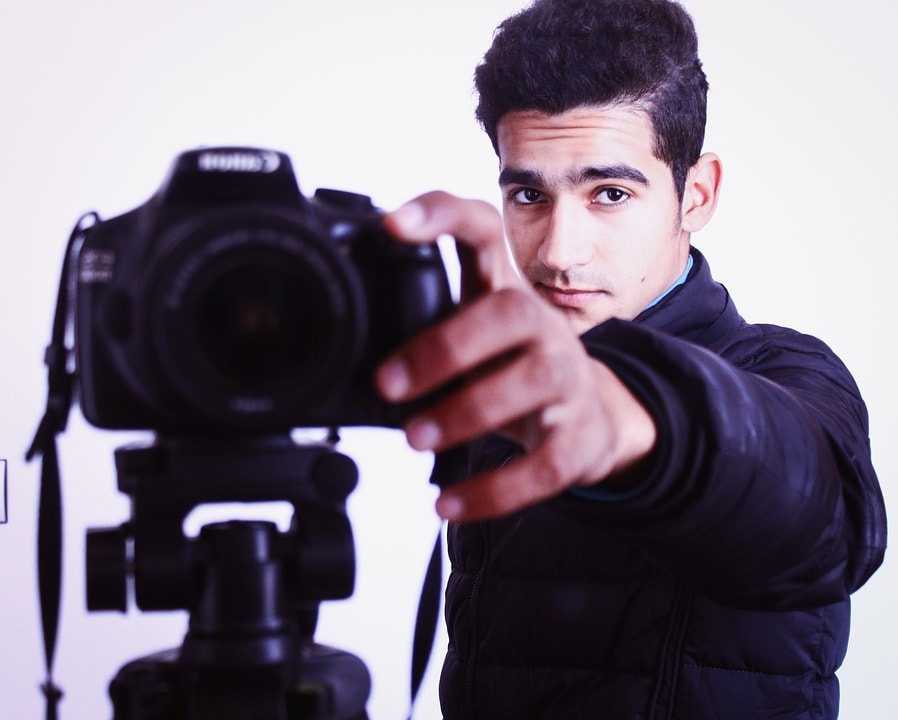 Now that we have all this beauty reviewed, it’s time to understand how to pick the best vlogging camera with flip screen from them.
Now that we have all this beauty reviewed, it’s time to understand how to pick the best vlogging camera with flip screen from them.
Things can get pretty complicated with cameras, so we’ll describe and explain all the main features that may matter for you.
Types of cameras
DSLR
The biggest, fanciest, and priciest cameras are DSLR (digital single-lens reflex) cameras.
DSLR cameras consist of the camera body and the lens. Because the lens is separate, it can be replaced to suit the requirements of the current scene.
DSLR cameras have a mirror that allows you to accurately see what the final image will look like. It basically delivers a direct optical view of the scenery, which gives you an accurate view of the final image.
Image sensors – more on them a bit later – are quite large in DSLR cameras, which is the primary feature that makes them great at photography and video shooting. Thanks to the larger sensor, DSLR cameras usually excel in low-light conditions and are better at producing background blur (also called bokeh).
Mirrorless
Unlike DSLR cameras, mirrorless cameras don’t have a mirror in them, as suggested by their name. Instead, they typically use electronics to deliver the image to the viewfinder.
In terms of image preview, mirrorless cameras tend to be worse than DSLR cameras. As we already said, the latter shows you the direct optical image. As for mirrorless cameras, the quality of the image delivered by the viewfinder heavily depends on the electronics.
On the other hand, electronics make a lot of real-time preview features possible, like watching a long exposure build or mixing filters.
Because they have no mirrors in them, mirrorless cameras are lighter and more compact than DSLR cameras. Likewise, they tend to have smaller sensors, which makes them less good in low-light conditions.
However, in recent years, mirrorless cameras with full-size sensor frames have been introduced, like Sony a7R III. So in terms of image quality, a few mirrorless cameras can compare with high-end DSLRs.
Most mirrorless cameras won’t have full-frame sensors though, which means that most mirrorless cameras will have worse low-light and depth-of-field performance.
Point-and-shoot
Point-and-shoot cameras are the smallest cameras out there for photography. Only camera phones are smaller than them.
The primary advantage of point-and-shoot cameras over other types is their compact size. They are very easy to carry around, and their light weight makes using them much less fatiguing.
In addition, point-and-shoot cameras tend to be much cheaper than mirrorless and DSLR cameras.
Point-and-shoot cameras usually have fixed lenses, i.e. their lenses are not interchangeable. The built-in lenses generally cover a wide range of zoom, aperture, and focal lengths, which allows for use in a wide variety of conditions. On the other hand, you won’t be able to fine-tune the lens to very specific needs.
Point-and-shoot cameras have the smallest sensors among the three camera types, meaning that they have the least good low-light performance. They can still produce great images, but they aren’t as capable of working in tough light conditions.
The cheaper point-and-shoot models also tend to lack key settings like aperture, shutter speed, or ISO adjustment. Autofocus also tends to be slower, as is the lag between pressing the shutter and photo capture.
Overall, point-and-shoot cameras are great for people who aren’t looking for much control over their camera and just want to quickly shoot vlogs.
Interchangeable vs fixed lens
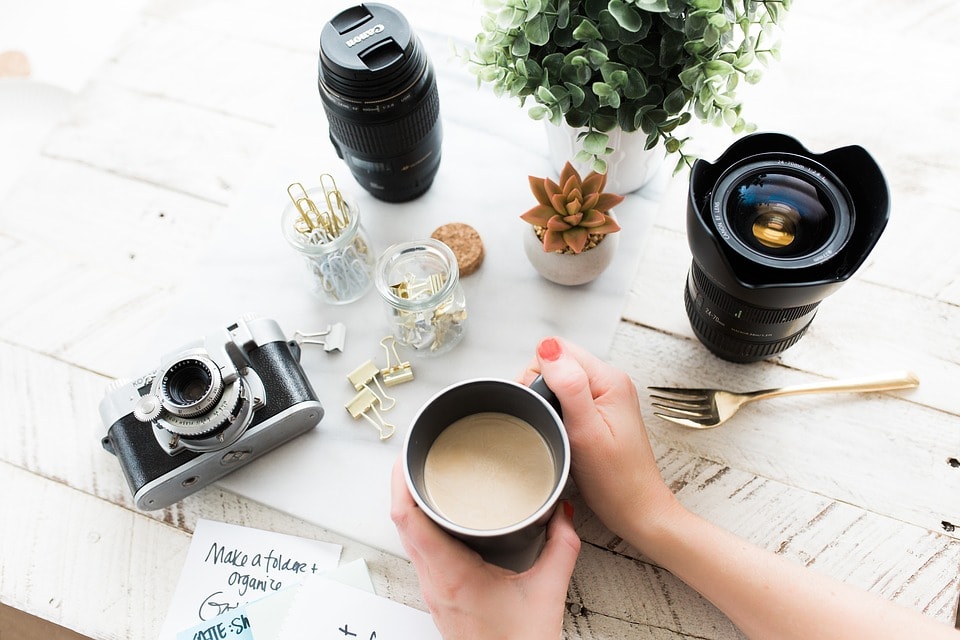 The lens in cameras can be either fixed or interchangeable. Both types have their own good and bad sides.
The lens in cameras can be either fixed or interchangeable. Both types have their own good and bad sides.
In cameras with interchangeable lens, you can use any kind of lens that is supported by the camera. This allows you to fine-tune the camera to the shooting conditions you are currently in.
On the other hand, the bad thing about interchangeable lenses is that they cost money. And if you are going to get a pricey camera like Canon EOS 80D, you will need to get high-quality lenses that can cost quite a lot.
Fixed-lens cameras are aimed at delivering the most functionality in a single lens. They are adjustable to some degree, which allows them to capture quality footage in a wide variety of conditions.
Fixed-lens cameras don’t require you to spend any money on getting additional lenses, which is one of their key advantages.
Besides, fixed-lens cameras don’t require you to wrap your head around different kinds of lenses, which is a great thing for beginners.
However, a single fixed lens definitely won’t be able to provide you with the same performance as in interchangeable lenses. There is only so much that you can do with a fixed lens.
Basic features you should care about
- Video quality. Video quality is the most important camera feature for vlogging. The easiest way to assess video quality on a camera is to look at what resolution it shoots with. 1080p (Full HD) is the minimum you should go for nowadays. If you really need it and can afford it, you could go for a camera that shoots 4K video.
- Frames per second (FPS). Modern cameras are most commonly shooting video at 30 or 60 frames per second. The higher the fps, the smoother the footage is going to be. If smoothness really matters to you, then go for the camera with the higher FPS, however higher FPS consumes more memory space.
- Flip screen resolution/dot number. Most modern cameras are going to have very similar 3-inch flip screens. With that being said, what may differ in them is the resolution. Flips screens with higher resolution/dot number will deliver a crisper image, allowing you to get a better idea of what the image will be like after the shooting.
- Microphone input. You won’t find a modern camera that doesn’t have a microphone. For some people, built-in microphones are perfectly enough, while others may need something better. If you will be using your own mic, make sure that the desired camera has a mic input jack.
- Image stabilization will ensure that your footage is smooth and shudder-free. Some vloggers shoot their videos in their studio, with the camera installed on a tripod. Such users most likely won’t need stabilization. But if you want to be able to shoot vlogs on the go, then your camera should have optical image stabilization.
- Size and weight. For vloggers who will be shooting on the go, the size and weight of the camera will be crucial. You would want to go for the smallest and lightest camera that can satisfy your needs. A big and heavy camera will be uncomfortable to hold and will be more fatiguing.
Advanced features you may want to care about
- Sensor size. Sensor size is the primary feature in cameras that impacts image quality. The general rule of thumb with sensors is “the bigger, the better.” Sensors can have the following sizes (bigger to smaller):
- Full frame.
- APS-H
- APS-C.
- 1.5-inch
- 1-inch
- 1/1.2-inch
- 2/3-inch.
- 1/1.8-inch.
- 1/2.5-inch.
- 1/2.3-inch
- 1/3.2-inch
- Lens focal length. The focal length basically impacts the angle of view and zoom of the lens. The longer the focal length, the higher the zoom and the narrower the angle of view. Focal length is important for both video and photo. Here are some rules of thumb for selecting focal lengths:Ultra-wide angle (<18mm). Suitable for very broad scenes.
Wide-angle (18-30mm). Good for landscapes or group shots.
Normal (30-70mm). Suitable for snapshots and portraits.
Telephoto (70-300mm). Good for close-up portraits and sports.
Supertelephoto (>300mm). Good for capturing details in wildlife, sports, etc.
- Aperture size. The aperture is the opening of the lens. When you press the shutter, the aperture opens for a split second to allow the sensor to catch a glimpse of the scene. And the larger the aperture, the more light it lets in, and vice versa.Aperture is measured by f-numbers, e.g. f/1.4, f/2.8, f/5.6, etc. The smaller the f-number, the wider the aperture. This is a bit counterintuitive and can cause confusion in new vloggers, but it’s just the way it is.Aperture size can be very important for your footage. Namely, if you want to have background blur, then you will have to go for a wider aperture (smaller f-number).On the other hand, the narrower the aperture (= the higher the f-number), the crisper the background will be.You may also want to have an adjustable aperture size to be able to control the amount of background blur in your images.
- Shutter speed. Shutter speed is the time for which the camera’s sensor is exposed to outside light. It is measured in seconds, e.g. 1/250 of a second, 1/1000, 1/5000, etc.If the camera’s shutter speed is set to 1/5000, it means that its sensor is going to be exposed to light for a 1/5000 of a second. The lower the number, the quicker the shutter is: for example, 1/5000 is faster than 1/4000. And besides, since faster shutter speeds let in less light, the footage is going to be darker.Letting more light into the camera, slower shutter speeds deliver blurrier footage, especially when there are moving objects. Conversely, very fast shutter speeds deliver crisper and more detailed footage. So fast actions scenes are going to be clearer with faster shutter speeds.For some people, shutter speed may have a crucial role in their vlogging. Not all cameras allow shutter speed adjustment, so if you need it, make sure that the desired camera has it. Besides, have a look at the shutter speed range delivered by the camera.
- ISO denotes the sensor’s sensitivity to light. The higher the ISO, the higher this sensitivity is. In darker conditions, higher ISO allows producing brighter and more visible footage. The cost of this increased visibility is more grain in the footage. If you will be shooting in low-light conditions often, then go for a camera that has a higher maximum ISO.
- Bumping the ISO on a camera can allow you to shoot footage in dark conditions without using a flash. But sometimes, a flash is going to do a better job. It can be useful when the footage is too grainy on a higher ISO, or maybe if you want to use a flash to add some more atmosphere to the footage. Nonetheless, if you will be needing a flash, make sure that the camera has one.
- Raw capturing. Some cameras can save footage in a raw format. Since raw footage is uncompressed, it is going to have all the information captured by the sensor. This allows you the most flexibility when it comes to post-processing. Typically, only the higher-end cameras allow raw capturing. Besides, raw footage is going to occupy much more storage space, so you’d need to have a capacious memory card for it.
- Optical zoom. Optical zoom may matter to you if you will be capturing footage at long distances. Otherwise, optical zoom won’t be necessary for you. If zoom does matter to you, then make sure that the camera you are getting has optical zoom, not digital. Digital zoom just enlarges the image, while optical zoom delivers true zoom with the same image quality regardless of the magnification.
- If you will be capturing photos, then megapixels may matter to you as well. Megapixels denote the size of an image. A 16-megapixel camera will deliver images that are composed of 16 million pixels.There is a common misconception that megapixels are the most important thing to look for in cameras. This isn’t true: they only indicate the size of the final image and nothing more. The actual quality will depend on the sensor’s size and other features we described earlier.Megapixels matter the most if you will be printing your photos. Generally, 20MP will look great on 12×18-inch prints, 8MP on 8×10, and 4MP on 4×6 or 5×7.
- Autofocus is present in most modern cameras, though the cheapest cameras may not have it. However, autofocus speed and accuracy varies widely between cameras. Quick autofocus is a nice feature to have in a vlogging camera. It allows you to quickly focus onto the point of interest while capturing footage. In addition, the camera needs to have accurate autofocus to be able to focus on the exact spot that you want to capture.
- Wi-Fi, NFC, or/and Bluetooth connectivity. Wi-Fi, Bluetooth, or/and NFS connectivity allows you to wirelessly transfer the captured footage to your computer, mobile device, or share it automatically to social media.
Some cameras even allow you to perform actions remotely via a smartphone app, e.g. take a photo, set a timer, view the viewfinder, etc. Nearly all modern cameras support remote transfer and control, but make sure that the desired camera has those features if you need them.
Notable camera brands
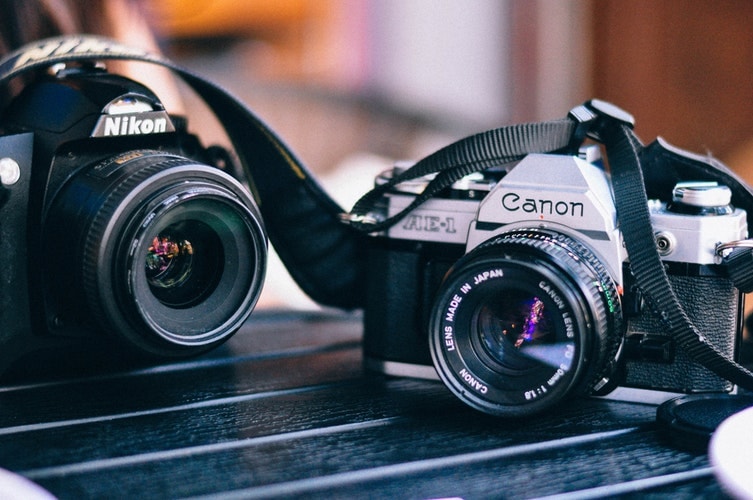
Nikon & Canon. While Nikon & Canon are separate manufacturers, we thought that we should mention them together because they are going side-by-side on the current camera market.
Being the two key players on the market, both offer cameras along the entire spectrum, starting from cheap point-and-shoots and ending with high-end professional-level DSLRs.
In addition, if you have a Nikon or Canon camera, you’ll gain access to a wide gamut of accessories and lenses.
While Nikon and Canon cameras deliver excellent image quality, they excel in different fields. In general, it is agreed upon that Canon cameras have a better selection of lenses, while Nikon models have better focusing and build quality. Which one to choose is likely going to come down to personal preference.
Sony is a serious competitor to either Nikon or Canon, but it isn’t quite there yet on the camera market.
Sony has been lately aggressively investing in the mirrorless market. They have a wide selection of mirrorless cameras, so you may want to go with them if you need one regardless of your budget.
Panasonic is yet another renowned digital camera manufacturer. While Panasonic can’t boast a wide selection of cameras as the bigger players on the market, it has good lines of both expensive and inexpensive DSLR, mirrorless, as well as point-and-shoot cameras.
While Samsung isn’t that invested in the camera market, they still have some interesting models to offer. In particular, they have their Smart Camera series, with NX Mini we examined being one of them.
Samsung cameras may not deliver the image quality of Nikon or Canon cameras, but they sure can do a great job. The outstanding cameras in Samsung smartphones are a testimony that Samsung knows how to make cameras.
Conclusion
Were you able to find that best vlogging camera with flip screen? If so, we think you should go and get it.
If not, then maybe our personal top 3 will help you.
Best picture and video quality
This spot definitely has to go to Sony a7R III. Thanks to its full-frame sensor, it has inherently better picture and video quality than any other camera on the list. And besides, it is so much better and more versatile than them!
Best all-around pick
We think that Canon EOS 80D is all-around the best camera on our list. For not so much money, it delivers excellent performance. And since EOS 80D supports plenty of Canon lenses, it has so much more potential than it may initially seem.
Best value for the money
In our opinion, Sony a6000, as a pretty inexpensive mirrorless camera, delivers the best value for the money. It is capable of shooting in a variety of conditions, first of all. Besides, with its interchangeable lens, it has a remarkable degree of expandability.

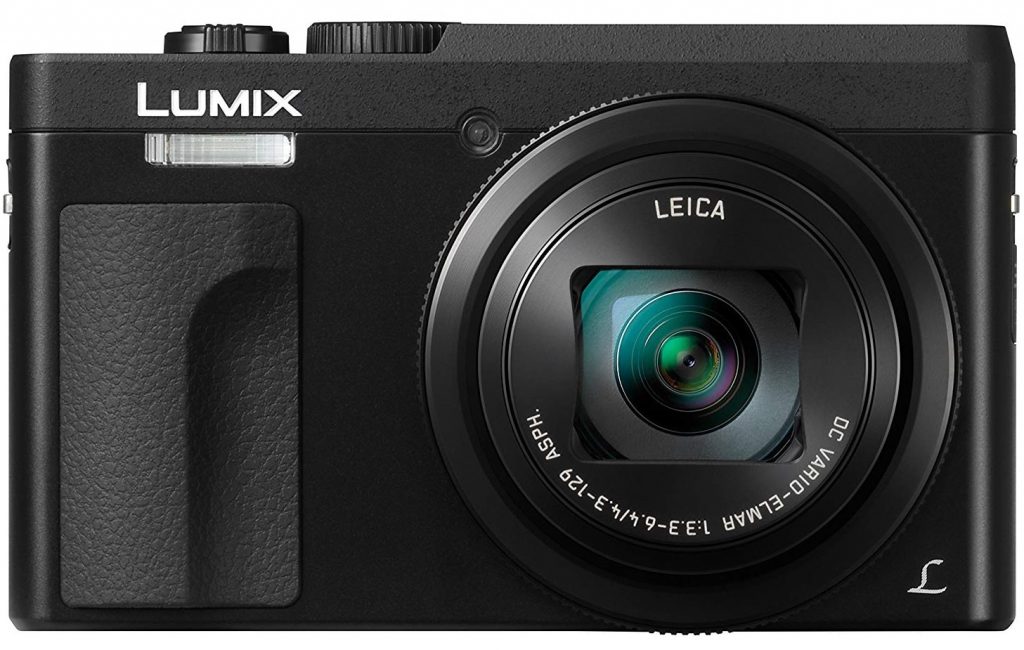

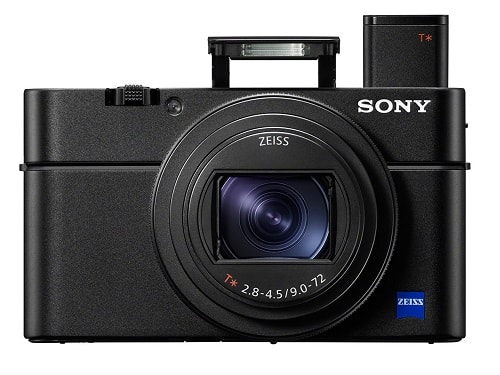
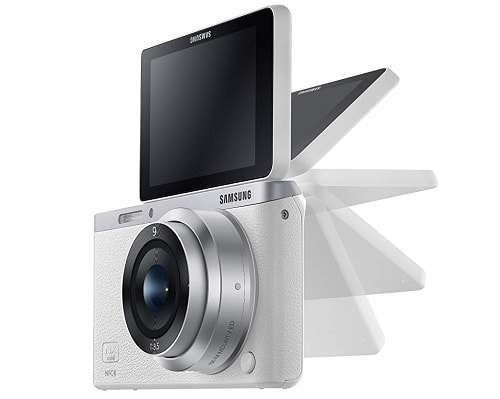
![Canon Digital SLR Camera Body [EOS 80D] with EF-S 18-55mm f/3.5-5.6 Image Stabilization STM Lens with 24.2 Megapixel (APS-C) CMOS Sensor and Dual Pixel CMOS](https://images-na.ssl-images-amazon.com/images/I/81-9BZkE39L._SL1500_.jpg)

![Canon PowerShot Digital Camera [G7 X Mark II] with Wi-Fi & NFC, LCD Screen, and 1-inch Sensor](https://images-na.ssl-images-amazon.com/images/I/81XECYYg8fL._SL1500_.jpg)



![Canon Digital SLR Camera Body [EOS 80D] with EF-S 18-55mm f/3.5-5.6 Image Stabilization STM Lens with 24.2 Megapixel (APS-C) CMOS Sensor and Dual Pixel CMOS AF - Black](https://images-na.ssl-images-amazon.com/images/I/81PD1V5J4AL._SL1500_.jpg)
